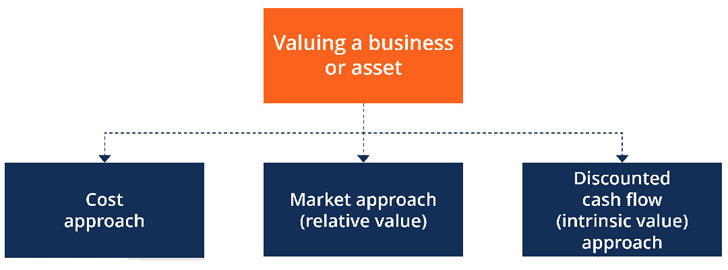Valuation Methods

Market
Approach
Market Approach
Comparable Company Market Multiple Method
Concept
Under this methodology, market multiples of comparable listed companies are computed and applied to the business being valued in order to arrive at a multiple based valuation.
Limitation
Selection of a comparable company since it is rare to find two or more companies with the same product portfolio, size, capital structure, business strategy, profitability and accounting practices.
Cost
Approach
Cost Approach
Net Asset Method
Concept
Valuation on Net Assets is computed by taking the net value of a business’s assets, subtracting therefrom the amount of the liabilities and preferred shareholders’ claims and dividing the remainder among the equity shareholders according to their individual rights.
"It is generally used as the minimum break-up value for the transaction".
Limitation
This methodology ignores the future return the assets can produce and is calculated using historical accounting data that does not reflect how much the business is worth to someone who may buy it as a going concern.
Income
Approach
Income Approach
Maintainable Profit Method or Discounted Cash Flows Method (‘DCF’)
Concept
- DCF uses the future free cash flows of the Company discounted by the firm’s weighted average cost of capital (the average cost of all the capital used in the business, including debt and equity), plus a risk factor measured by beta
- Beta is an adjustment that uses historic data to measure the sensitivity of the company’s cash flow.
- The DCF method is a strong valuation tool, as it concentrates on cash generation potential of a business.
- DCF analysis is based mainly on the following elements:
- Projection of financial statements (key value driving factors)
- The cost of capital to discount the projected cash flows
When Valuation Report From Registered Valuer is Required?

- Further issue of capital
- Issue of sweat equity shares
- Valuation of transactions entered between specified related party for a consideration other than cash
- Compromise or arrangements with creditors/members
- Merger and amalgamation of companies
- Purchase of minority shareholding
- Creation of security
- Return of allotment
- Valuation of assets as required by Audit Committee
- Valuation of assets and liability as required by liquidators
- Valuation of securities under various provisions of IBC, 2016
